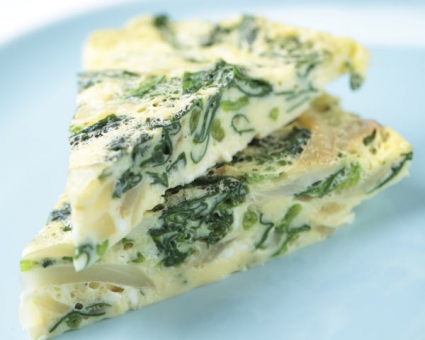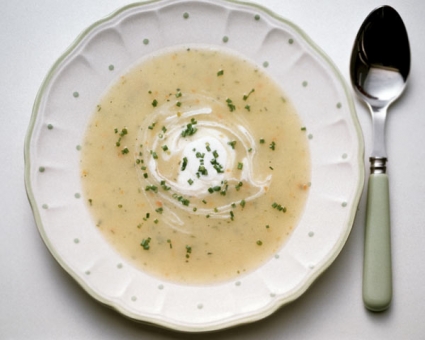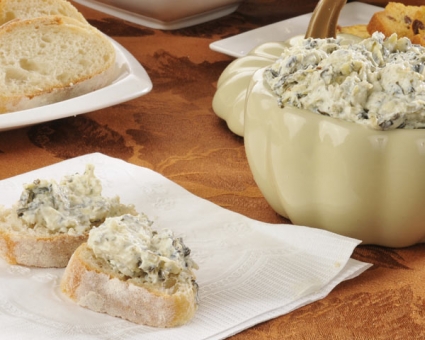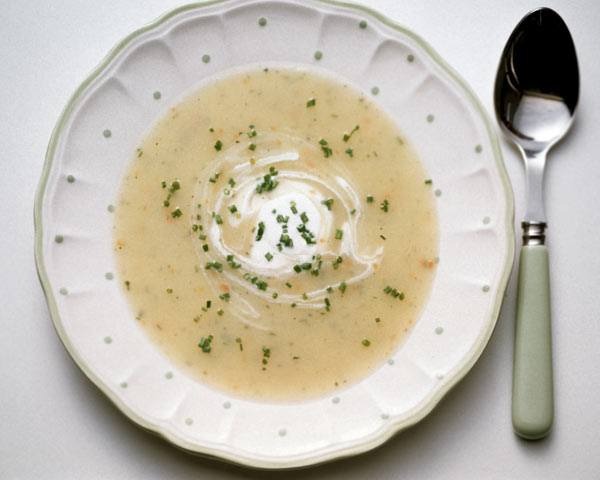Eating Away Your Allergies
As spring winds move us toward summer heat, we can awaken our senses and combat colds and allergies by choosing foods that support the lymphatic system. Lymph is the colorless fluid containing white blood cells, which bathes the tissues and releases toxins. Just as the sap in maple trees flows each spring to renew the tree, so do our body's fluids need increased circulation.
Lymphatic circulation enhances immunity by draining waste from metabolism and reducing inflammation caused by build-up in connective tissues. Simplifying your diet and increasing your intake of whole grains, fruits, and vegetables will support lymphatic renewal. Spices and vegetables that cleanse the lymphatic system include fennel, coriander, fenugreek, kelp seaweed, burdock, turnips, mustard, and horseradish.
In his New York Times article, chef and cookbook author Mark Bittman explains, "Both a person's health — as well as the environment's — will improve with a simple shift in eating habits away from animal products and highly processed foods to plant products and what might be called 'real food'." The more we pay attention to how we feel after eating, the more we notice our body's cues for balance.
To ease the transition into spring, try preparing these three dishes. Each one will awaken your palate to a new set of sour flavors. Enjoy them individually or cook them all to serve as a complete meal.
According to Paul Pitchford, author of Healing with Whole Foods, the healing properties of ingredients in the recipes below derive from Traditional Chinese Medicine (TCM), a centuries-old healing modality that persists today. To satisfy the whole being, TCM encourages including five flavors in each meal: sweet, sour, salty, pungent, and bitter.
The five flavors correspond to five elements: earth is sweet, metal is pungent, water is salty, wood is sour, and fire is bitter. These flavors also match the seasons: sweet for late summer, sour for fall, salty for winter, pungent for spring, and bitter for summer.
The sour flavor and the wood element influence the liver and gall bladder. Sour foods are astringent in nature and include sauerkraut, horseradish, vinegar, lemon, chicken, tomatoes, and sourdough rye bread.
One of the main healing properties of this Dandelion Leek Frittata is the eggs. Each one contains 6 grams of protein, nine essential amino acids, and only 1.5 grams of saturated fat. They are rich in lutein, which helps prevent macular degeneration and cataracts, they improve the human lipid profile, thereby balancing cholesterol, and they contain naturally occurring vitamin D. Dandelion greens are iron-rich, fiber-filled spring greens that stimulate the bitter flavor on the palate, which encourages bile production, thereby strengthening digestion and aiding liver rejuvenation. Leeks strengthen lungs and offer a rich source of fructo-oligosaccharides, which stimulate growth of healthy bifidobacteria and suppress the growth of potentially harmful bacteria in the colon.
Click here to see the Dandelion Leek Frittata Recipe

The main stars of this soup, parsnips, are part of the parsley family and provide folate, fiber, and phenolic acids, which may help reduce production of cancerous cells. They contain ample amounts of soluble fiber, which moderates fat and cholesterol absorption in the intestines while diluting bile acids to prevent reflux. The thyme found in this soup also contains thymol, an anti-microbial volatile oil that can help prevent colds. Thyme is also rich in flavonoids, whose anti-oxidant activity keeps blood pH in balance.
Click here to see the Parsnip Soup Recipe

Artichokes used to make this spread help the liver metabolize fat, flush the gall bladder, and cleanse the palate of excess mucus. The lemon used in the recipe awakens the pungent flavor in the body, detoxifies the lymphatic system, and provides vitamin C. Lastly, the olive oil is an anti-inflammatory that is rich in vitamin E and monounsaturated fats, which enhance colon health. Choose the best olive oil possible, preferably one whose label lists an acidity of less than 0.5 percent.
Click here to see the Artichoke Spread Recipe

Lisa Masé is a whole foods cooking educator, food writer, and herbalist. Visit her website Harmonized Cookery for more healthy cooking advice.
This story was originally published on May 29, 2013.
